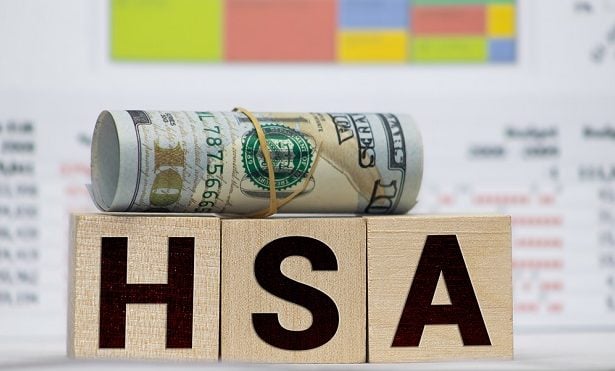
With tax season on the horizon, employers and their benefits teams have a timely opportunity to continue educating employees about the tax advantages of health savings accounts (HSAs), both for this year's tax returns and for future financial planning.
As your employees prepare for the April 15 tax deadline, benefits managers should be communicating regularly to remind them that post-tax HSA contributions (up to the IRS contribution limit) can reduce their tax bills and that they have until that IRS deadline to max out. Employees 55 and older can make an additional annual catch-up contribution and save even more on their taxes while investing for future medical expenses.
Recommended For You
Below are important tax considerations to know about as employers educate employees on the benefits that HSAs provide.
Contributions for 2023
The IRS allows combined employer and employee contributions of an HSA of $3,850 for single employees and up to $7,750 for families. For planning purposes, employees should know that the limits increase to $4,150 and $8,300 for the 2024 tax year.
Employers also should remind employees 55 and older that they can contribute an additional $1,000 as a catch-up contribution on both single and family plans. This additional contribution can be helpful in creating extra savings for what is likely to be increased medical costs in retirement.
It's not too late to lower taxable income
Your benefits team should be sure to communicate to employees that they can continue to fund their accounts up to the tax filing deadline and have those contributions count toward their 2023 tax filings, even if they had not opened an account in 2023. This will lower employee's tax obligations by reducing their taxable income. They have until April 15 to open an eligible account and make tax-deductible contributions up to the annual limit. They just need to tell their HSA administrator that they are making 2023 tax year contributions, rather than 2024. However, if they have not had an HSA account open with a balance sometime in the previous 18 months, they cannot use that money to pay medical expenses incurred before the account was opened on a tax qualified basis, but they can use those funds for future expenses.
Reporting HSA contributions and expenses
Most HSA administrators automatically generate the forms your employees will need to file their tax returns, including IRS Form 5498-SA, which reports contributions, and Form 1099-SA, which reports distributions taken out of the HSA. Individual filers then report HSA contributions and distributions on IRS Form 8889.
While neither the IRS nor your HSA administrator requires receipts for withdrawals used to pay medical expenses, you should advise employees to keep them in case of an audit. Money spent on non-qualifying expenses can be taxed as income and also incur a 20% penalty if done before age 65.
In addition, contributions — the total of employer and employee contributions — that exceed the annual limit may result in a 6% penalty until the employee removes the excess contribution. They have until the April 15 deadline to correct the oversight, but they will need to make an "excess contribution removal" request with the HSA administrator to ensure the tax reporting is correct.
Additional employer benefits
HSAs provide many benefits to employees and contribute to the overall benefits package that helps you recruit and retain talent. But they also have significant benefits for employers.
To be eligible to contribute to an HSA, employees must enroll in a qualifying high deductible health plan, which normally offers both employees and employers lower premiums than traditional health plans. For employers, the savings can be reinvested in the business or used to contribute to employee HSAs.
HSA employer contributions are tax-deductible as a business expense and can lower payroll costs because the money you contribute is not subject to income, Social Security, Medicare, and unemployment taxes. Additionally, employee pre-tax contributions made to an HSA through a Section 125 Cafeteria plan further boost employer tax savings in the same manner.
Tax considerations of flexible spending accounts
Like HSAs, flexible spending accounts (FSAs) offer the tax advantages of being funded with pretax payroll deductions, and employees can use the savings for qualified medical expenses. However, FSAs need not be paired with high-deductible insurance plans. Employers benefit through tax savings, similar to HSAs.
Employees can enroll in both but if the person is making HSA contributions, the FSA must be a Limited Purpose FSA, meaning that it is restricted to specific expenses, such as dental or vision, not covered by a high-deductible insurance plan. The IRS caps annual employee FSA contributions. For 2023, the maximum contribution is $3,050. For 2024 the cap will be $3,200. Contributions are made with pre-tax dollars, saving on employer and employee tax obligations.
Unlike an HSA balance that can be rolled over from year to year and stays with employees if they change jobs, money put in FSAs must be spent annually or it reverts to the employer. Money magazine estimates that this costs employees $3 billion annually in unused FSA funding. Employers can extend the use-it-or-lose-it restriction for a short grace period into the following year before the money is forfeited.
While tax season may be a stressful time for employees and businesses alike, it's important to spend time understanding how accounts like HSAs impact tax obligations. By sharing insights into the tax benefits of HSAs, employers can continue in their ongoing efforts in strengthening HSA adoption and ensure their employees are taking full advantage of their benefits offerings.
Please note, this is not legal or tax advice. Please contact your tax professional with any tax-related questions.
© 2025 ALM Global, LLC, All Rights Reserved. Request academic re-use from www.copyright.com. All other uses, submit a request to [email protected]. For more information visit Asset & Logo Licensing.







